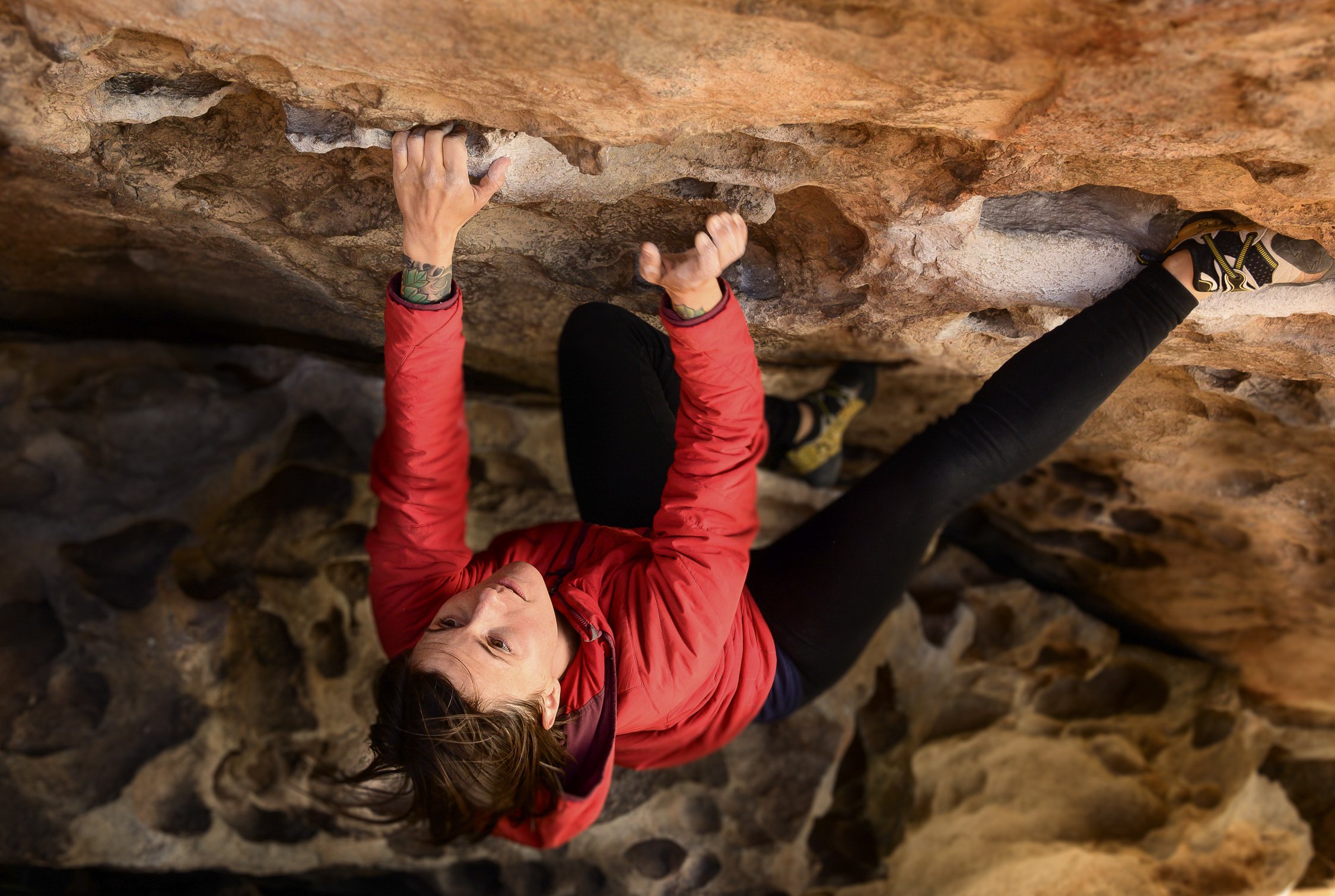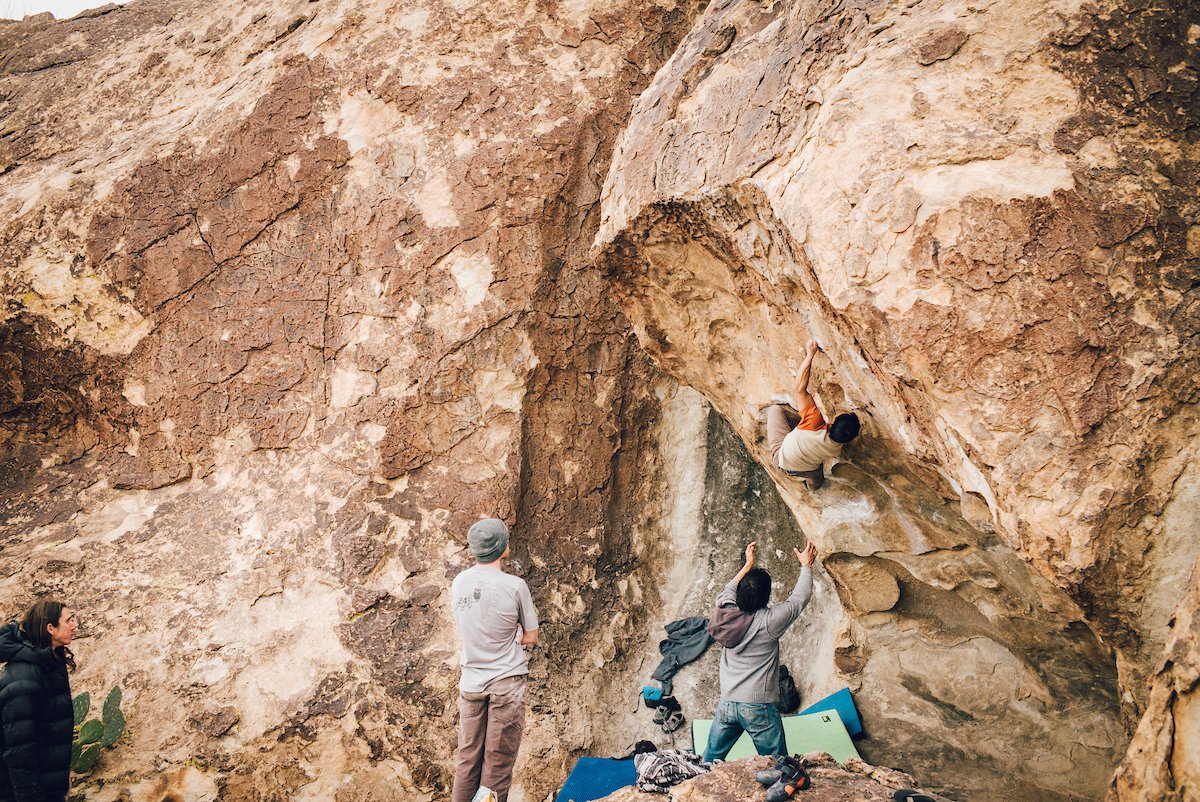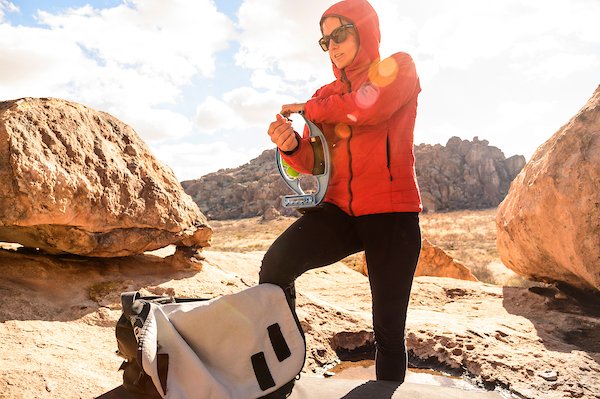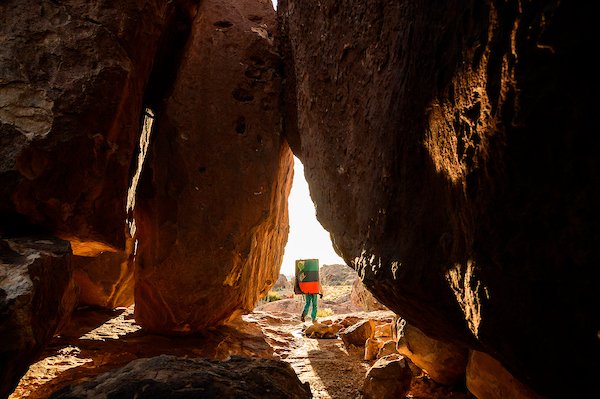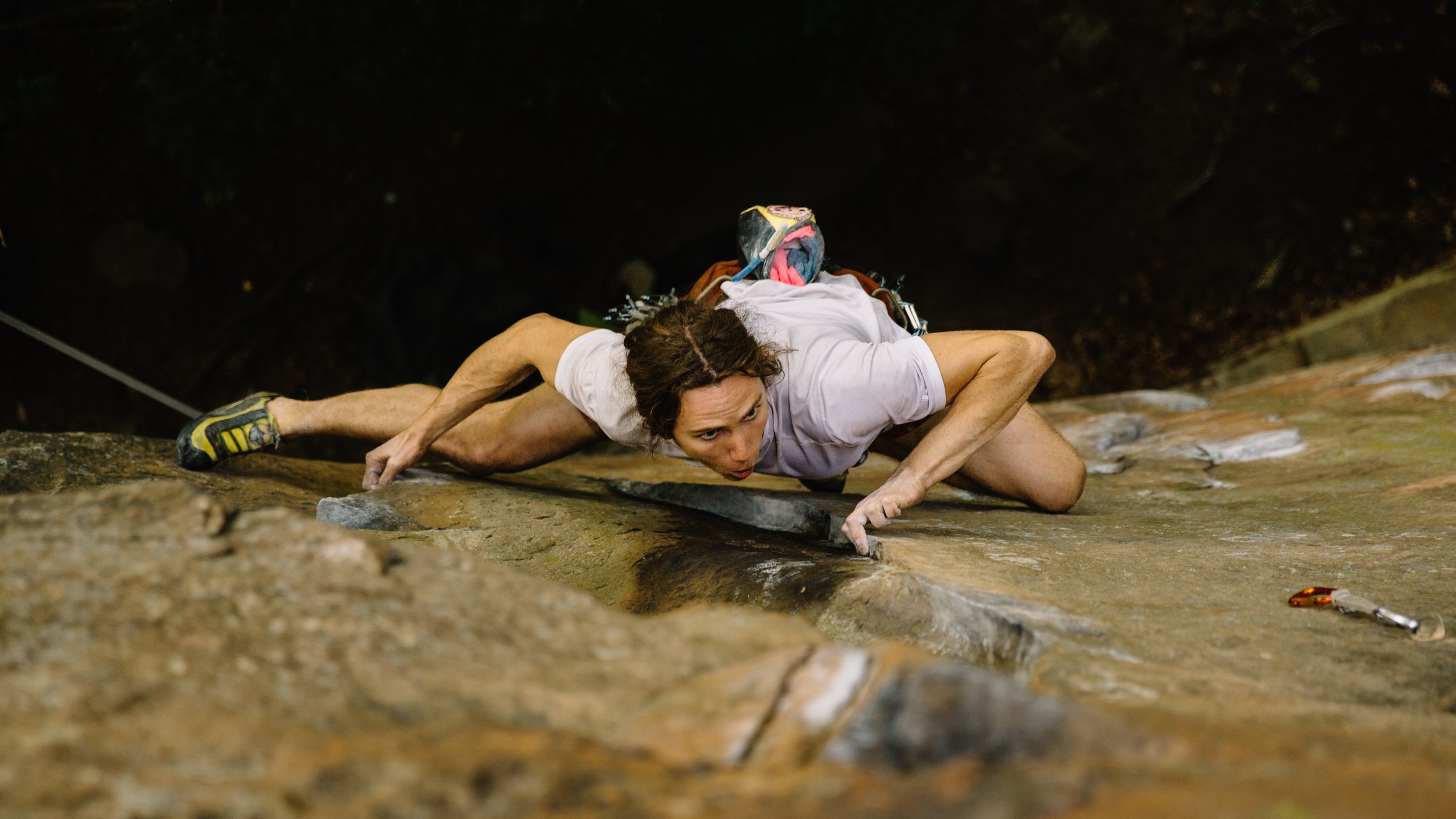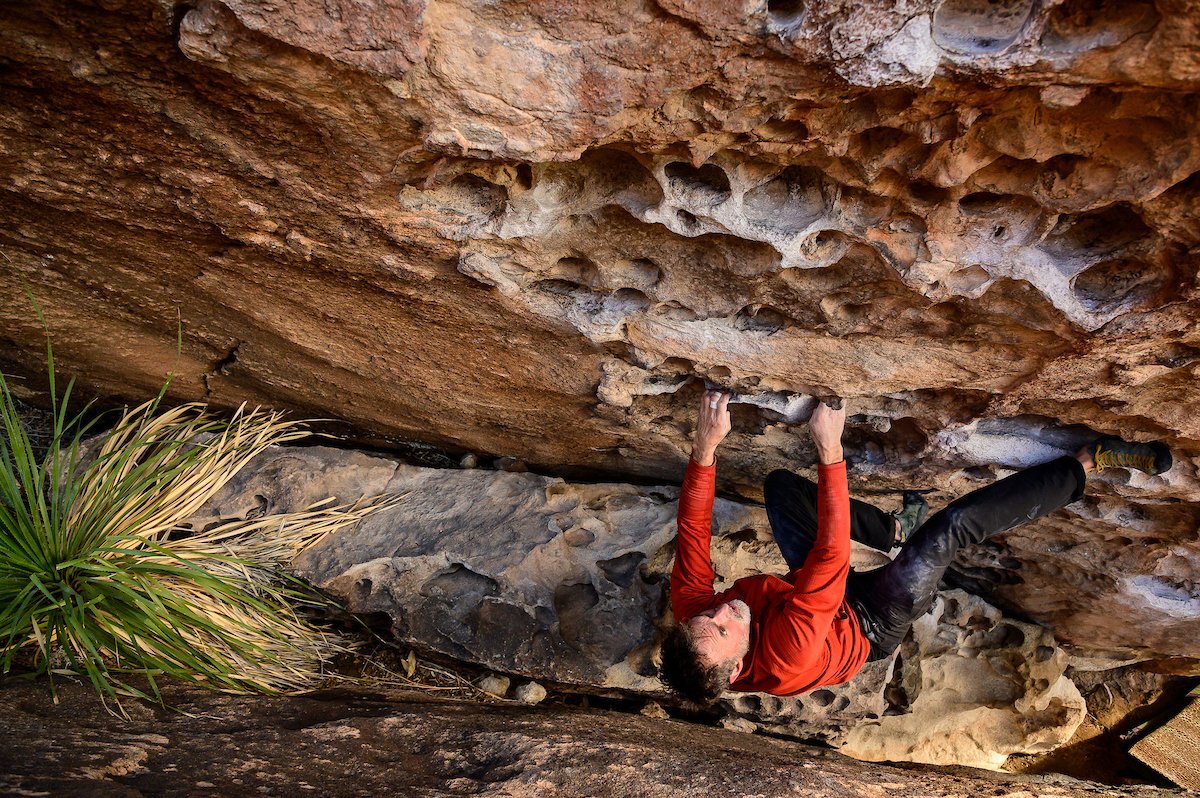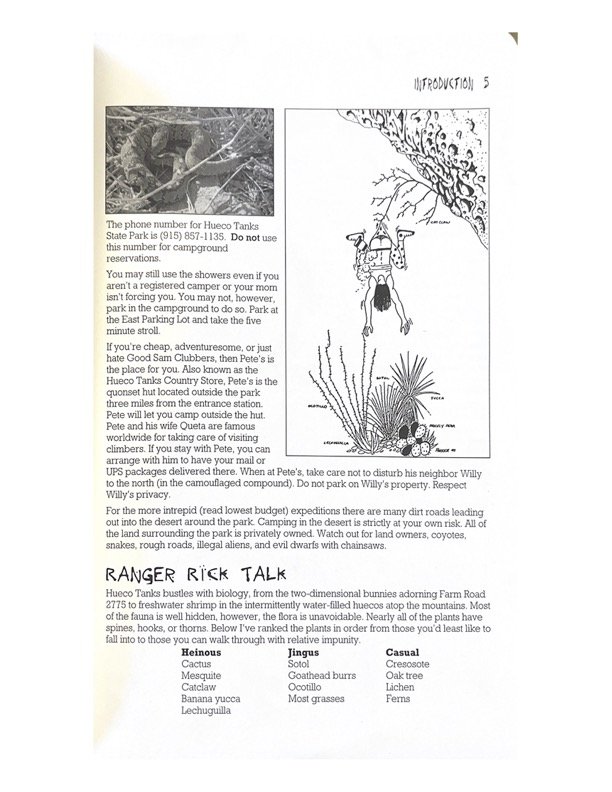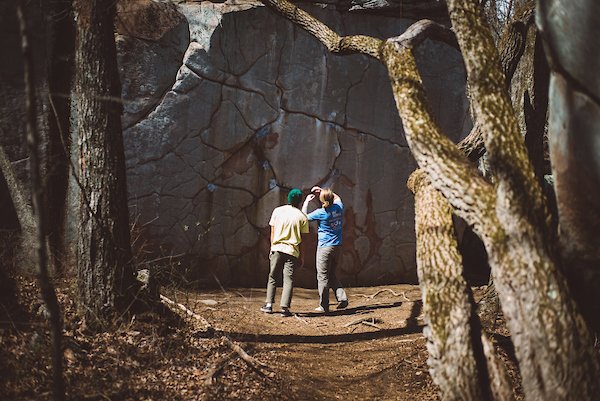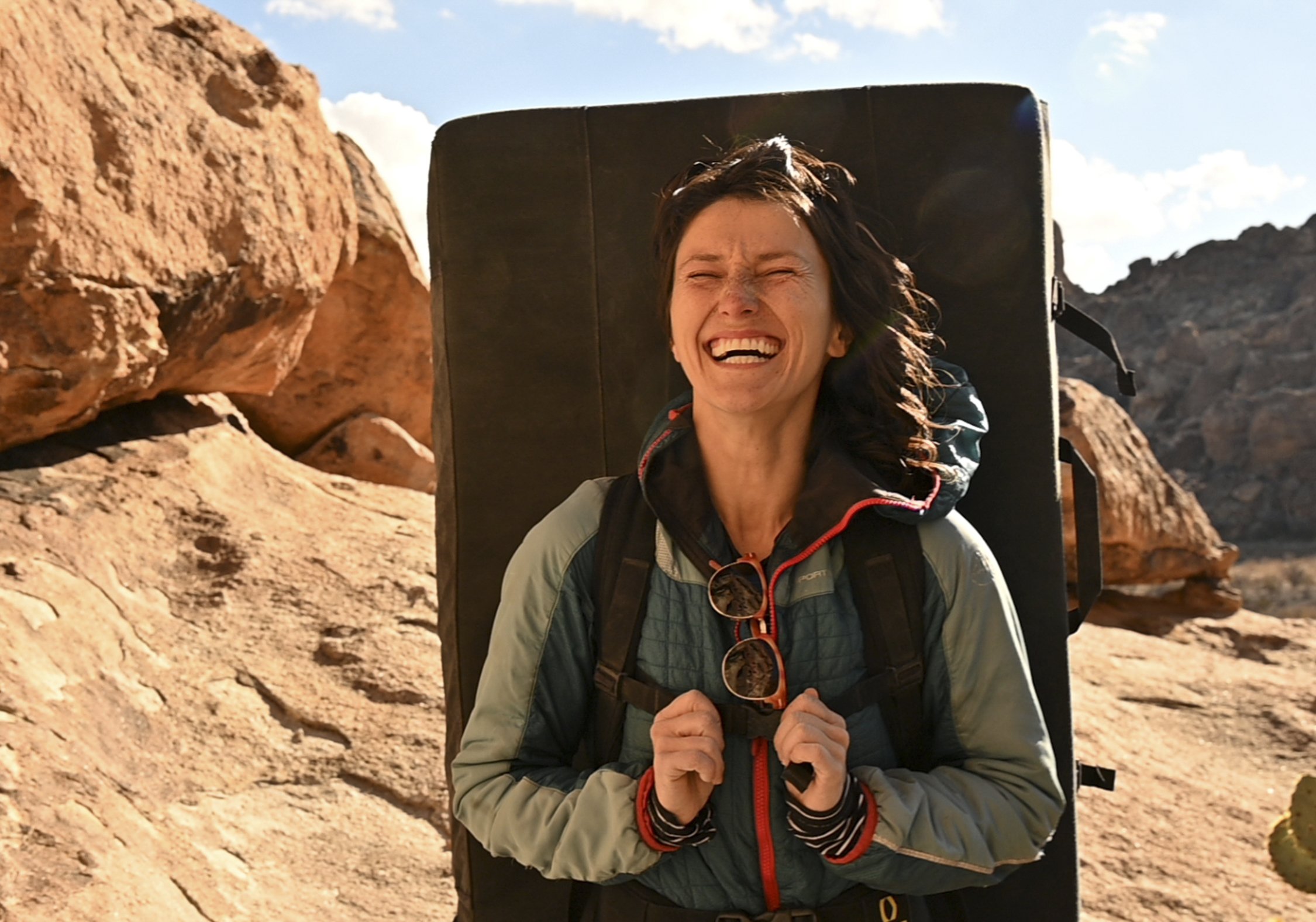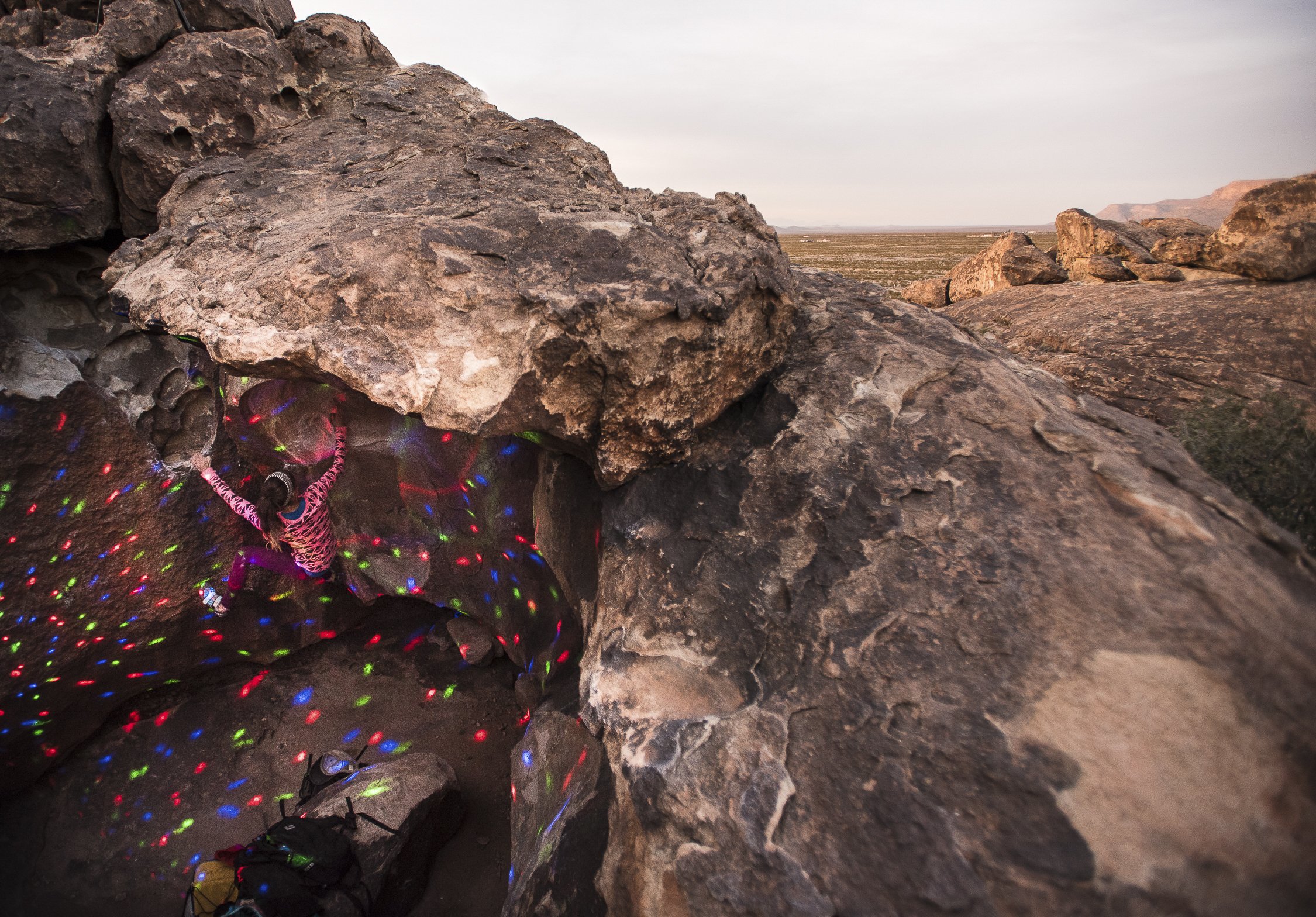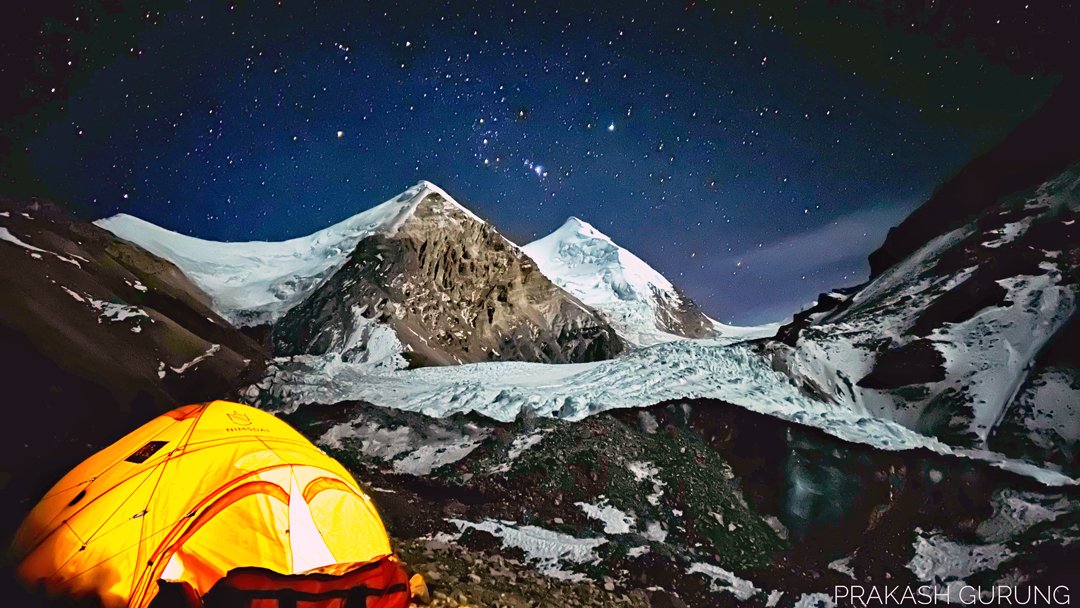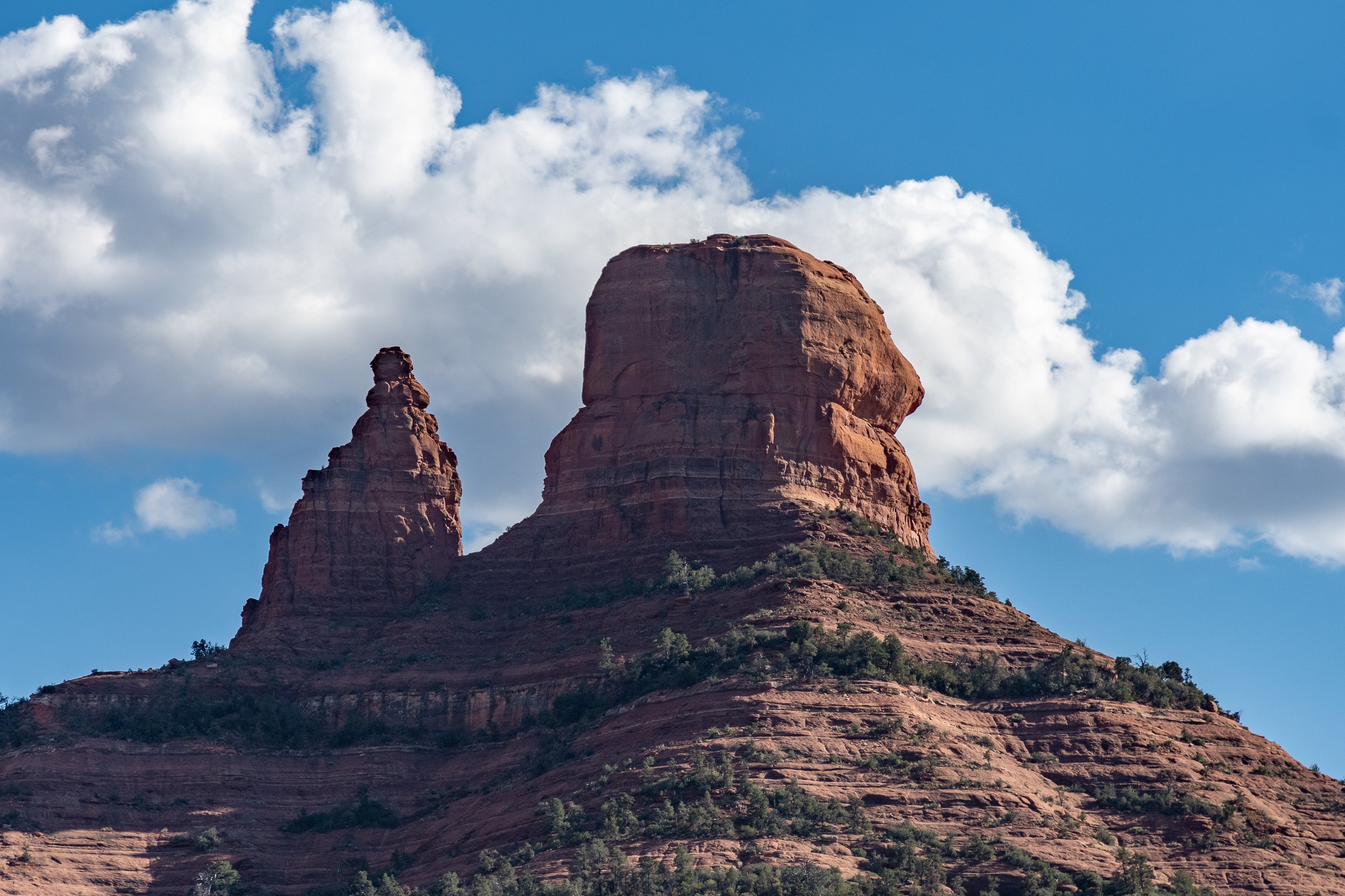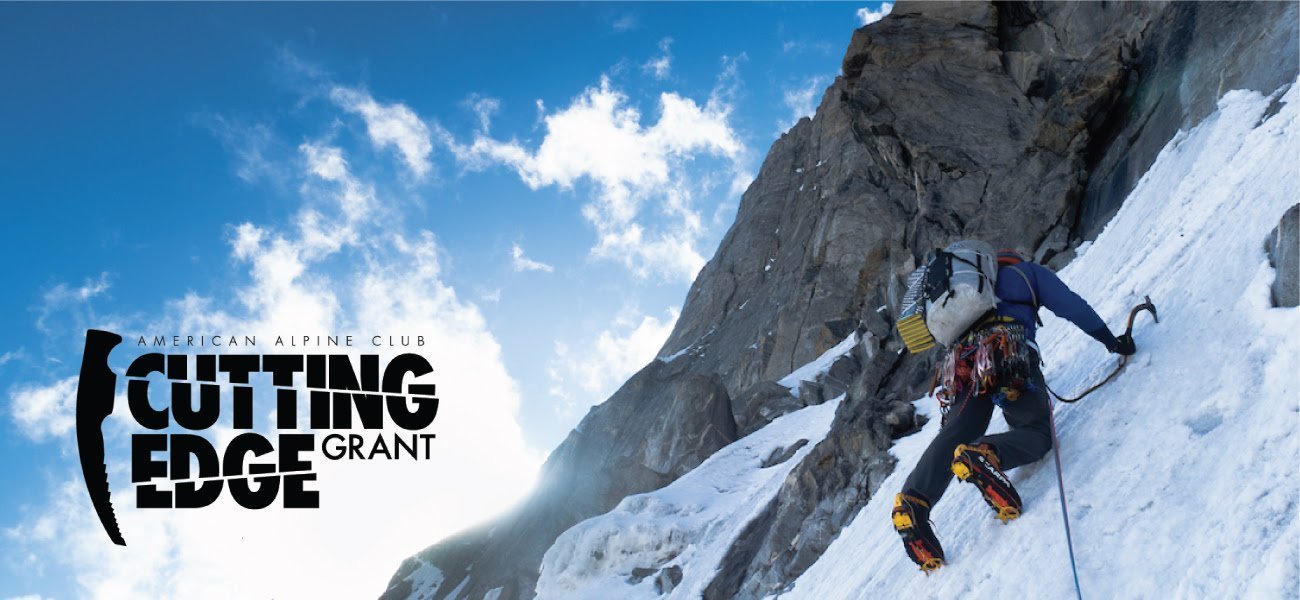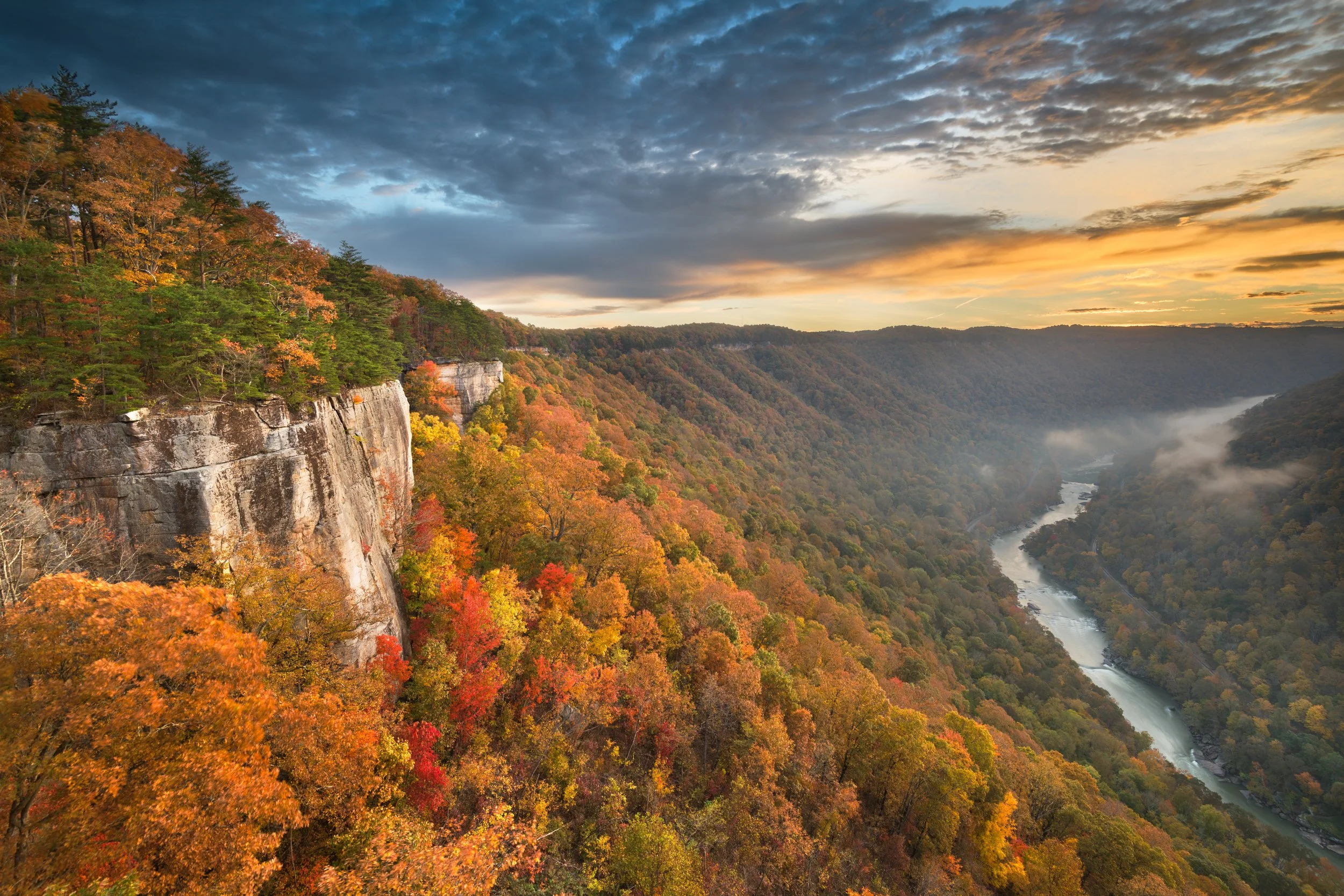Photo by: Dawn Kish
By Sierra McGivney
Down in southern Texas, where tumbleweeds and cacti rule the desert, lies a bouldering mecca with a rich history and hundreds of problems waiting for you to climb. With 300 days of sun and perfect holds carved into boulders, Hueco Tanks State Park has it all.
"It's a wonderland of boulders bristling with positive micro-flakes and peppered with gaping huecos; it's enormous roofs, vein-bursting traverses, and pleasant mantle-free topouts; it's joyful jughauls, cerebral sequences, and impossible-looking problems that go." —John Sherman, Hueco Tanks Climbing and Bouldering
Highballs, Crimps, and Huecos, Oh My!
Hueco Tanks is the birthplace of the V grading system, the Yosemite of bouldering if you will. Climbers can find trad and sport climbs here, but they are few and far between. Hueco Tanks is the quintessential bouldering destination.
PC: Michael Lim
As Todd Skinner said in Desert Dreams, "This place is brutal. [But] if your elbows hold together and the tendons of your fingers hold together, then you'll leave Hueco stronger than you've ever been."
Hueco has a range of bouldering from V0 to V15. If you're just starting or looking to get stronger in the offseason or just love bouldering, Hueco Tanks is for you. Better Eat Your Wheaties, a V9 boulder problem, is an overhung crimp marathon that won't leave you missing your gym's moon board. If you love highball bouldering, The Maiden V0 is the must-climb highball—topping out at 35 feet; you won't want to look down. You are visiting Hueco, so you'll want to climb some of the world-famous holds: The Ghetto Simulator V2 follows an incredible line of chalked huecos up to a crux finish. Be warned, this climb may be greasy because of its popularity.
North Mountain alone has 850 problems, so there are hundreds of options, grades, and climbing styles at Hueco. For more information about climbing in the area, check out the essential bouldering guide by Matt Wilder and Jason Kehl from the AAC Library.
"I have traveled the world and have yet to see a place superior to Hueco Tanks in problem concentration or one that better embodies the inexplicable desire to progress that all climbers share. Hueco's rock quietly urges you to come closer, to take a look under all the roofs, touch the holds, and somehow gives you the audacity to try things you would never have dared before." —Scott Milton, Hueco Tanks: The Essential Guide to America's Bouldering Mecca
Training
Training is an important tactic for a successful and fun climbing trip. Since you'll be visiting Hueco during the winter months, you'll want to begin training in August or September. Next, you'll want to focus on a goal for your trip. Hueco is known for having lots of different climbing styles, so the more you narrow it down, the better. As there are hundreds of problems with varying levels of difficulty and style, you can get as specific as training for roof climbing V5 and up, or you can leave it as open as wanting to climb all of the highballs in the park—either way, you can build a solid base to be prepared for any type of climbing you'll come across in Hueco.
PC: Dawn Kish
Porphyritic syenite is no stranger to wearing down, and you are bound to find a few polished climbs. Train to improve your body tension and get good at using tiny feet. Hueco's classic and popular climbs have seen a lot of people and tend to be slippery, so improving both tension and foot placement will go a long way.
Even if techy vertical walls and boulders call your name, improving roof skills will benefit your climbing at Hueco. Focus on strengthening your core and legs. If you have yet to explore climbing on a roof, practice heel hooks, toe hooks, and knee bars at your climbing gym.
The last thing you'll want to focus on is power endurance. That might sound a bit out of place since bouldering requires only a handful of moves, but chances are you'll be throwing yourself at a boulder problem repeatedly. You'll want to be able to try moves all day until you send or collapse, so building up endurance should be in your training plan.
For a deeper dive into training, check out Power Company Climbing.
Pictographs and Problems: A Brief History
All aspects of Hueco are deeply rooted in a rich cultural history. Hueco Tanks is part of the Chihuahua desert ecoregion, the largest desert in North America. Though evidently known to climbers as an epic bouldering location, Hueco Tanks is also home to deeply important historical artifacts and a sacred site for several Indigenous cultures. The human history of Hueco spans thousands of years, possibly starting about 10,000 years ago, and the pictographs and petroglyphs there tell the story of many—they continue to be an important part of this sacred site for the Kiowa, Mescalero Apache, Comanche, and Tigua (or Ysleta del Sur Pueblo) tribes, who use the site for prayer and gatherings.
PC: Dawn Kish
The history that weaves together Hueco Tanks, making it such a unique place to climb, was a point of friction between the route establishers and the park rangers in the past. John "Vermin" Sherman arrived in the early 1980s, establishing over 400 classic boulder problems and the "V" rating system.
"Along with great friends like Donny, Hardin, Chris Hill, and others, we got to develop the finest bouldering on the continent," says John Sherman in Hueco Tanks: The Essential Guide to America's Bouldering Mecca.
The act of bolting was illegal in the park until 1989, and since the park is mostly bouldering, this didn't prove to be a problem until Todd Skinner showed up, ready to bring challenging sport climbing to Hueco.
Skinner spent winters climbing at Hueco Tanks, floating between campgrounds and friends' houses, and spent summers developing routes all over the world. He was known especially for the first free ascent of the Salathé Wall in Yosemite with Paul Piana in 1988. As time passed, he rented apartments or homes, becoming a hub for climbers.
According to the article "When Legends Die, the Changing Face of Hueco Tanks," Skinner and friends would bolt routes at night, erroneously arguing that there was a loop-hole in the Park’s no-bolt rule—bolters had to be caught in the act, or such was Skinner’s interpretation. When morning rolled around, the route was legal to climb. In this way, Skinner put up Legends (5.13a) in 1987.
PC: Michael Lim
The park rangers were not a fan of this, because Skinner and others were trespassing in order to use this supposed “loop-hole,” and clearly not acknowledging the spirit of the prohibition on bolting. After an unknown climber got caught bolting, the park banned rope climbing for three weeks in 1988. Tensions continued to rise as Hueco became a well-known destination for climbing in the 80s and 90s. But climbers were not the only user group putting pressure on this fragile environment. Between rowdy parties, destroyed vegetation, and defacement of the historic pictographs, Hueco couldn't handle the influx of visitors—hikers, tourists, locals, and climbers—and their impact on the landscape. Beginning September 1, 1998, reservations would be required to enter the park.
As climbers and the Park settled into these new ethics of engagement, Hueco climbing continued to make a name for itself as a unique destination and community. Skinner, Amy Whisler, Carol Gogas, and John Gogas purchased the land currently known as Hueco Rock Ranch in 1991. They built the Ranch to be a communal space for climbers, much like the early days of his rented apartments and houses. The kitchen and common room were made to be the center of the house. Everything was built around housing a community of climbers.
"We soon understood that what most affected the quality of each day was not the climbs we chose but the people we chose to climb with. This led to a Utopian experiment of building a home a mile from the park to house a carefully chosen core of great people, many of whom also happened to be great climbers," reflects Todd Skinner in Hueco Tanks: The Essential Guide to America's Bouldering Mecca.
PC: Dawn Kish
In 2000, Rob Rice took over the Ranch and added a guide service to the property. After more than a decade of ownership and management, Rice relocated out of state. In May 2012, The Access Fund went under contract to purchase the Ranch and assigned the property to the American Alpine Club for long-term ownership and management.
Skinner's vision of a home for climbers in Hueco would continue, but in a new form.
How to Climb in Hueco: A Checklist
Feeling inspired to wrestle some sandstone pebbles in the Tanks? Here's some beta worth following–ensuring you are prepared for your trip.
PC: Dawn Kish
Plan your reservation.
The daily entrance fee into Hueco Tanks State Park is $7; the park is open from 8 a.m. to 6 p.m. October through April. A note for check-in: The office closes a half hour before the park closes. Reservations are required to minimize our impact on the park because of the fragile desert landscape and ancient pictographs and petroglyphs.
Reservations go fast during the weekend but stay relatively open during the weekdays. Your safest route is to book as far in advance as you can. If you forget to reserve a pass, you can show up at the park as it opens and try to get a walk-in pass.
To make a reservation to climb in the self-guided area, call (512) 389-8911. North Mountain is in the self-guided area of the park. A 15-minute orientation video is required for visitors to watch if they are venturing into the self-guided area. Don't worry; once you've watched it, you are good until next year.
A guide service is required to access the East Mountain, East Spur, and West Mountain. You can request a tour through the park by calling (915) 849-6684. Another option is going through one of the local guide services listed below:
Pack a Skin Kit
Items to include but are not limited to are nail clippers, a roll of tape, a finger file, and nontoxic glue. "The bloody flapper is the official injury of Hueco Tanks," according to John Sherman.
PC: Hueco Tanks: The Essential Guide to America's Bouldering Mecca by John Sherman
Mind the Heat & the Cacti
Bring sunscreen. More sunscreen. Maybe even a hat. Even in the winter, the desert sun can be intense. The average temperature in January is 44 degrees Fahrenheit, with the first freeze in mid-November and the last freeze in late March. According to the Mountain Project page for Hueco Tanks, "After mid-April, it's hot as sin."
The plants here are no joke; most are out to maim you. See the provided excerpt from John Sheman's Hueco Guidebook.
Grocery stores
The closest grocery store is The Montana Vista Market in Homestead Meadow South.
If you're driving through El Paso to Hueco, you can stop there for grocery and gear stores.
Brush Up on Your Outdoor Ethics
As John Sherman said in his 1995 edition of Hueco Tanks Climbing and Bouldering, "Hueco Tanks is not an amusement park created for climbers." It's up to us to preserve and keep Hueco open to climbers. Leave No Trace includes not using social trails, brushing your tick marks, and never climbing on or near petroglyphs.
Some bouldering areas have been closed due to their proximity to petroglyphs. Read more about how to identify petroglyphs and which rocks to respectfully steer clear of climbing—>in this article. James Lucas covers a new app that allows climbers and other recreationists to check rock formations for faint petroglyphs, and to learn about their significance and meaning!
PC:Dawn Kish
Book Your Lodging and Meet New Climbers
If you plan on climbing in Hueco Tanks, the Hueco Rock Ranch is the best place to stay. The Rock Ranch is a 4-mile drive to the Park and offers a range of accommodations from private rooms to campsites. Costs vary depending on lodging type and your AAC member status.
The Ranch has three options for accommodations: A house with private or shared rooms, camping for two people to a site, and flat spots for "road-tripping machines." The barn is a communal cooking area with a lounge, games, and books. There are showers available for $1 for 4 minutes.
Well-behaved dogs are allowed at the campground but not in the bunkhouse.
Prices are as follows: Non Member / Member
Private Bunk Room: $75 / $40
Communal Bunk Room: $45 / $25
Camping: $10 / $6 per person
Make A Wifi Plan and other Hueco Rock Ranch Logistics
If you are a work from home nomad and plan on answering emails or taking meetings, Wi-Fi is available, but it has a limited bandwidth, so it might be worth bringing another internet source. The water is potable, but the Ranch relies on water delivery, so please bring your own water! If you're just trying out bouldering or don't own a crash pad, they are available to rent for $15 for the first day.
There are both trash and recycling bins at the ranch.
The Hueco Rock Ranch season is from November 17, 2023 - March 10, 2024.
Have A Rainy Day Plan
Hueco is a desert, but it does occasionally rain. Hueco Tanks State Park has recently instituted a new rule that prohibits climbing until 24 hours after a rain event. Learn more at the Park’s website.
PC: Dawn Kish
Train Creatively
Get prepared to utilize a lot of body tension and creative foot beta. Seek out those boulders in the gym or locally that teach you a thing or two about toe hooks, bicycles, and knee scums.
Dream Up a Tick-List, and Then Be Ready to Abandon It
There are hundreds of boulders; keep your mind open and be willing to try anything. You never know which boulder will kick your butt.
Bouldering at Hueco is PHYSICAL—plan for rest days.
Bring books or games.
Explore El Paso (40 minutes) or White Sands National Monument (1.5 hours).
Visit the Ysleta del Sur Pueblo Cultural Center Museum and learn about the extensive history and culture of the Ysleta del Sur Pueblo tribe, who continue to revere Hueco Tanks as a sacred site for prayer and gatherings.
If you can line these up with rainy days, you're golden.
Keep an eye out for the Hueco Rock Rodeo!
The pebble-wrestling competition of your dreams. Coming back to Hueco February 16-18th, 2024.
Grab a bouldering pad and set off on a winter climbing adventure where the sun always shines and the accommodations are the best around. Reservations are now open for the 2023-2024 Hueco season!
PC: Dawn Kish
**This article is undergoing edits thanks to community feedback.

